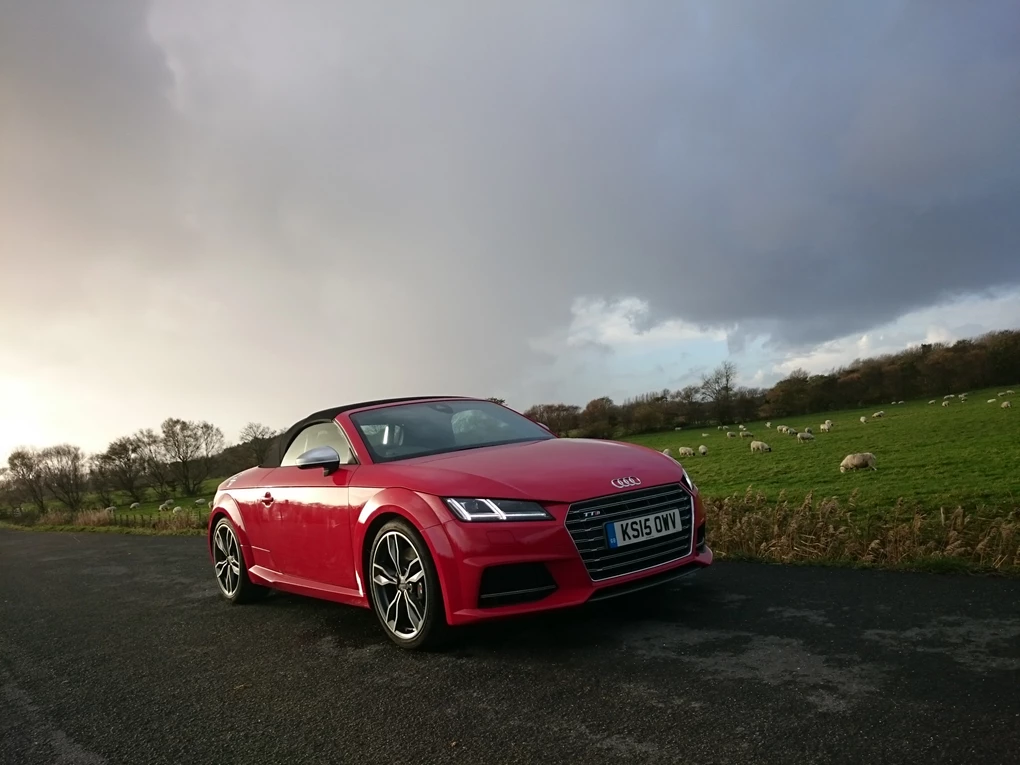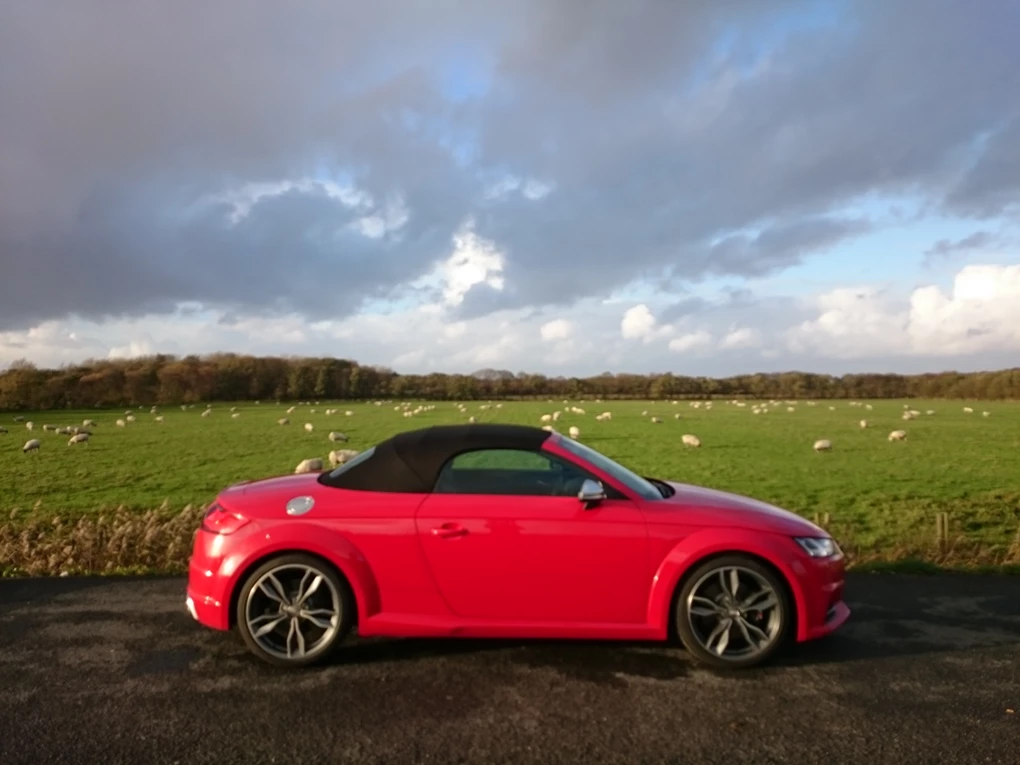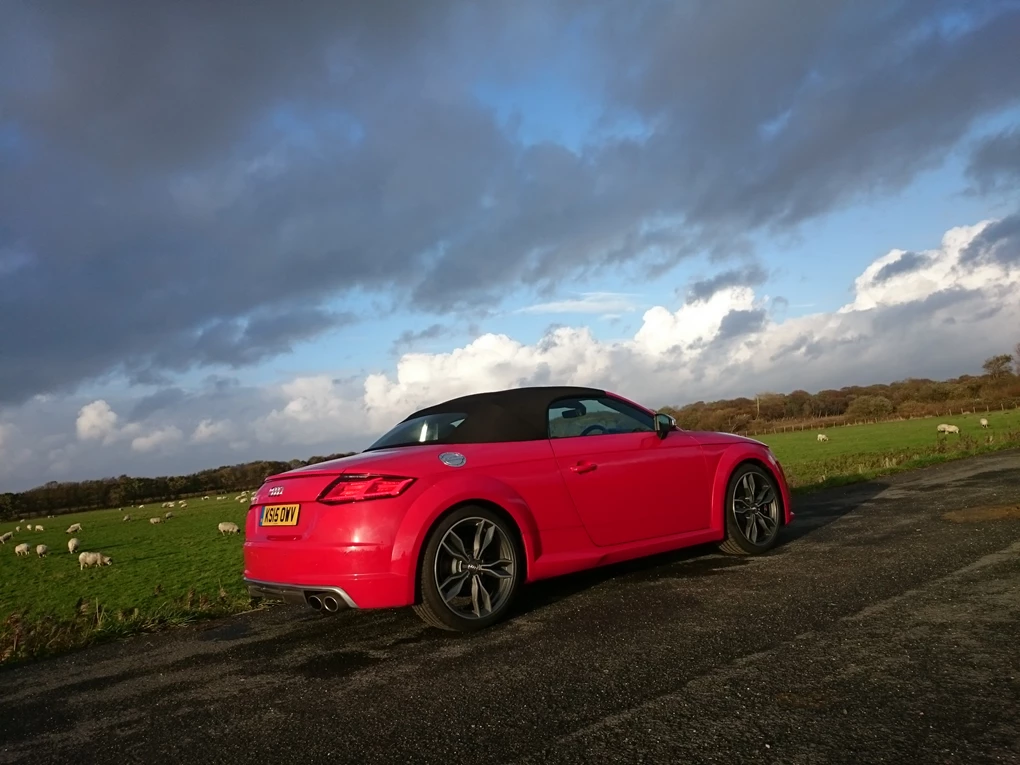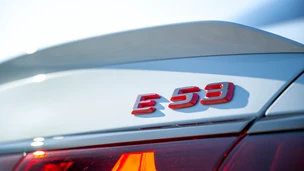The Roadster version of the third-generation TT is a two-seater with a fabric roof which folds or unfolds in ten seconds. Mechanically, it's the same as the Coupe in that it has either a petrol or a diesel engine, of either 1.8 or 2.0-litres, all equipped with a turbocharger. Petrol models, but not the diesel, are available with S tronic twin-clutch semi-automatic transmission and four-wheel drive. There's also a more powerful TTS quattro version if you want your drop-top TT to be seriously quick.
The closest rivals are the BMW Z4 and Mercedes SLK, both of which have metal rather than fabric roofs. Audi also considers the Porsche Boxster to be among the TT's opposition.

Performance
Extra weight means that the Roadsters are slightly slower than equivalent Coupes. Of the former, the TTS S tronic is the quickest, with a 0-62mph time of 4.9 seconds, while the manual takes 5.2. Where there's a choice, S tronic cars do better than manuals in this test because they have much faster gearchanges, despite being slightly less urgent in the first few yards after a standing start.
The non-TTS 2.0 TFSI S tronic quattro can do 0-62mph in 5.6 seconds, or six tenths quicker than a car with the same engine but manual transmission and front-wheel drive. The diesel-fuelled ultra unit takes 7.3 seconds, while the 1.8-litre TFSI petrol gets 178bhp and takes 7.2 seconds. These are the only two TT Roadster's with a top speed below 155mph (to which all the other versions are limited) but superior mid-range power means the diesel doesn't feel much slower in normal driving.

Ride and Handling
The Roadster has an almost unbelievably low level of the scuttle shake which usually bedevils convertibles
Traditionally based on the same underpinnings as the Volkswagen Golf, the TT hasn't always had the best reputation for great handling. But, it has got sharper with each generation, and the third TT is no exception. The Roadster is lighter than before, and it feels it, with sharp steering helping it to feel more agile and less nose-heavy than before. Front-wheel drive versions hang on gamely, but for the ultimate grip and all-weather ability, the quattro four-wheel drive versions are unflappable. The TTS model is available with magnetically adjustable dampers, but even in their softest setting, the suspension struggles to deal with potholes and sharp bumps with 20-inch wheels fitted. Once up to speed and on smoother roads, the ride is far better controlled. Grip is incredible and few cars would be quicker on a damp, wintry road, but despite all the TT's polish, it isn't as involving or fun as the Porsche Boxster. More positively, the Roadster has an almost unbelievably low level of the scuttle shake which usually bedevils convertibles. A clear sign of a very strong body structure, this means that the Roadster is not disturbed by bumps to a greater extent than the Coupe is.

Interior and Equipment
Kia’s President and Chief Design Officer, Peter Schreyer, contributed to the design of the first-generation Audi TT.
While the TT Coupe is essentially a four-seat hatchback, even if it doesn't look much like one, the Roadster is unquestionably a two-seater with very little storage space in the cabin behind the driver and passenger. The boot is 25 litres smaller, at 280 litres, and there is no way of extending this. However, since the roof has its own storage compartment the practicality doesn't change whether it's up or down. Although it's made of fabric rather than metal, the triple-layered roof does a very good job of keeping exterior sounds out of the cabin. Noise levels are not noticeably greater than those of the admittedly rather loud Coupe. All TTs including the entry-level Sport have DAB digital radio, Bluetooth phone preparation, a microphone integrated into the seatbelt to improve voice quality when the roof is down and the excellent 12.3-inch LCD instrument display whose satellite navigation graphics are among the best in the industry. Most UK owners are expected to choose the S line trim level, which includes larger (19-inch) wheels, sports suspension (though this can be deleted at no extra cost), leather/alcantara seat trim and automatic headlights and wipers.
Cost
The ultra diesel engine wins easily here. In Sport form it's the cheapest car in the range.
The ultra diesel engine wins easily here, its 120g/km CO2 emissions mean annual Vehicle Excise Duty payments of £30 and a BIK rating for the 2015-16 financial year of 20 per cent. No other model comes close to this, and while the official economy figure of 61.4mpg may be difficult to achieve, the ultra is certainly going to through fuel more slowly than any of the petrol versions. The best of these is the most basic 1.8 TFSI, which records 142g/km and 46.3mpg. The TTS costs from just over £40k and officially it's only slightly behind the regular 2.0 TFSI in terms of running costs, with 39.8mpg in the S tronic auto, but using its performance on a regular basis will soon change that.
Our Verdict
The TT Roadster might not be as exciting to drive as the Porsche Boxster - not many cars are - but it's quick, and with quattro fitted, the Roadster is undeterred by the worst of the British weather. The interior sets the standard for its rivals, and despite being fabric, the roof is actually very good at blocking unwanted noise out of the cabin and raises impressively quickly. A wide spread of engines, from the economical to high-performance, means that the TT should appeal to an equally broad range of customers. The fact it looks stunning should also help tease wallets open.





